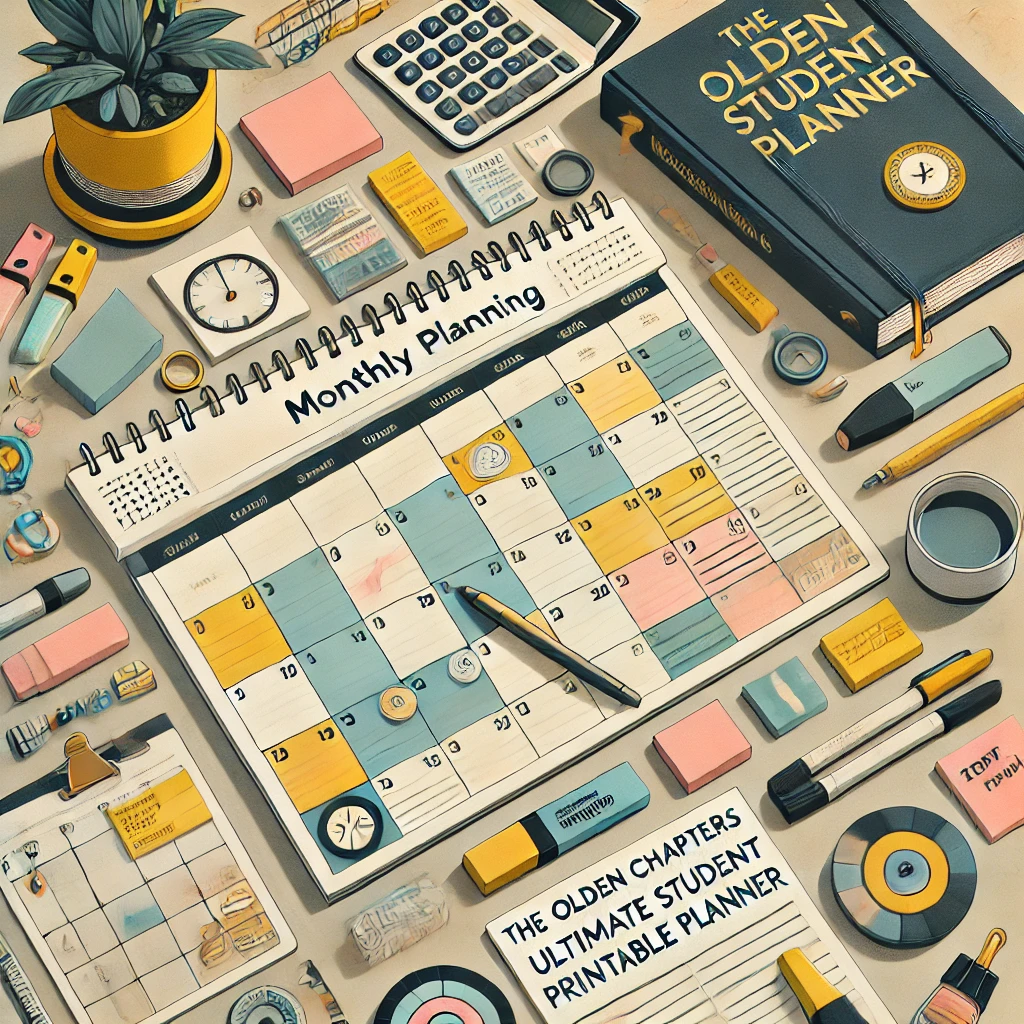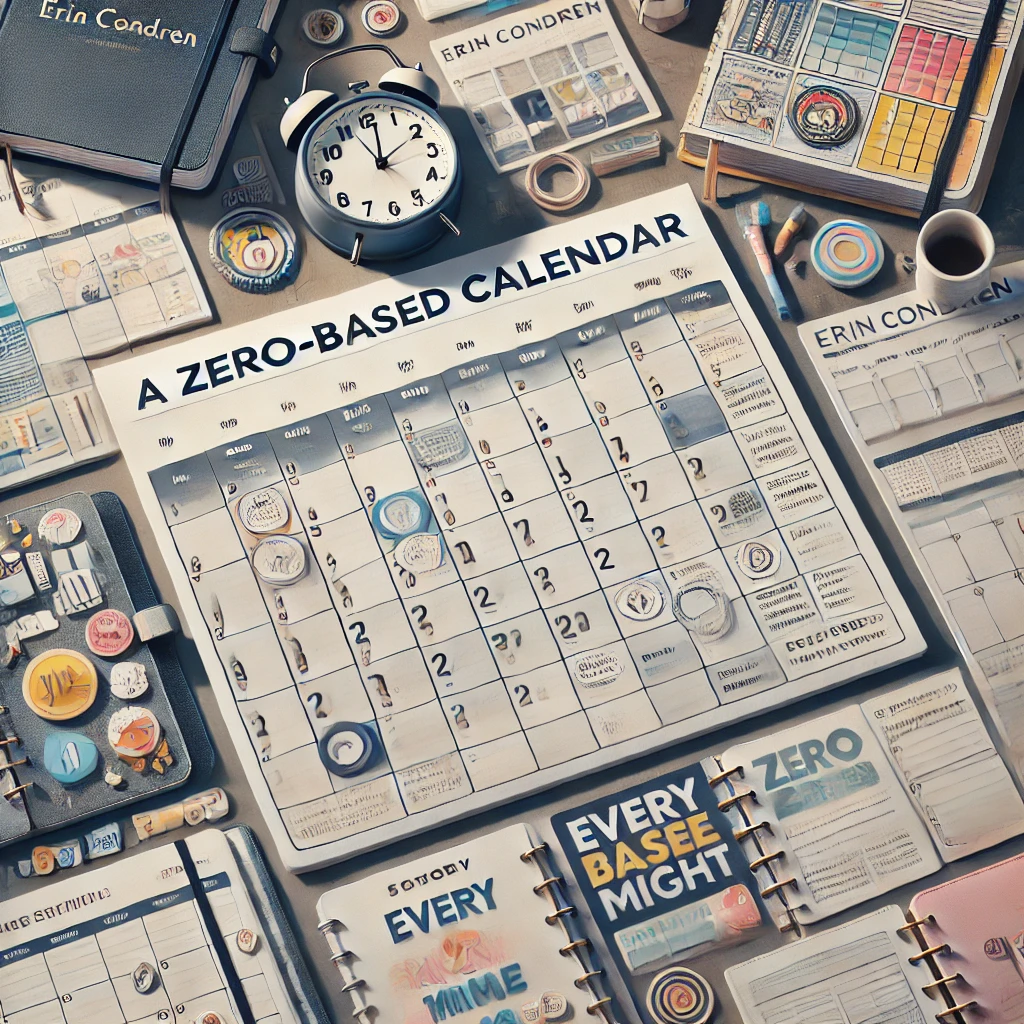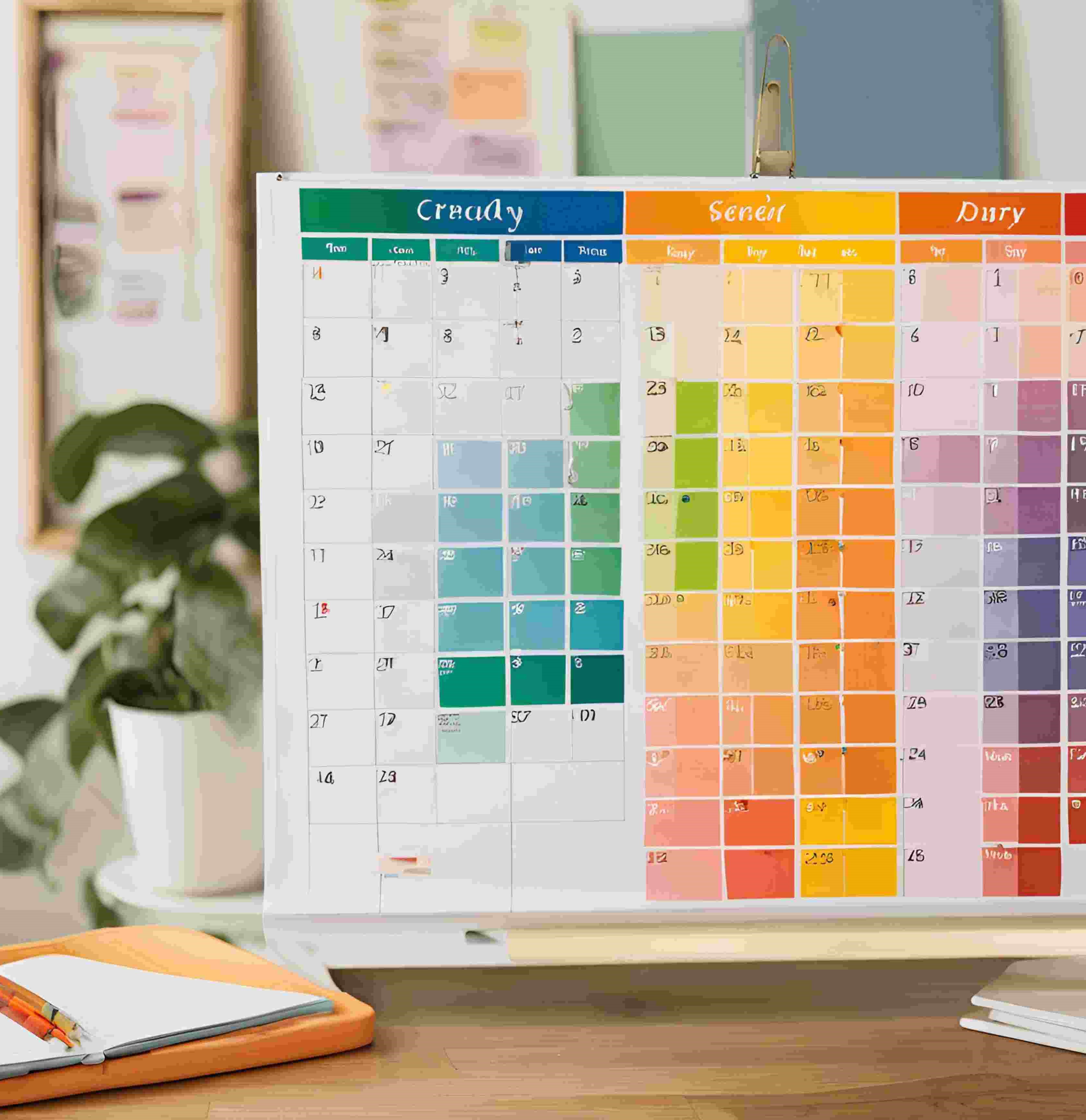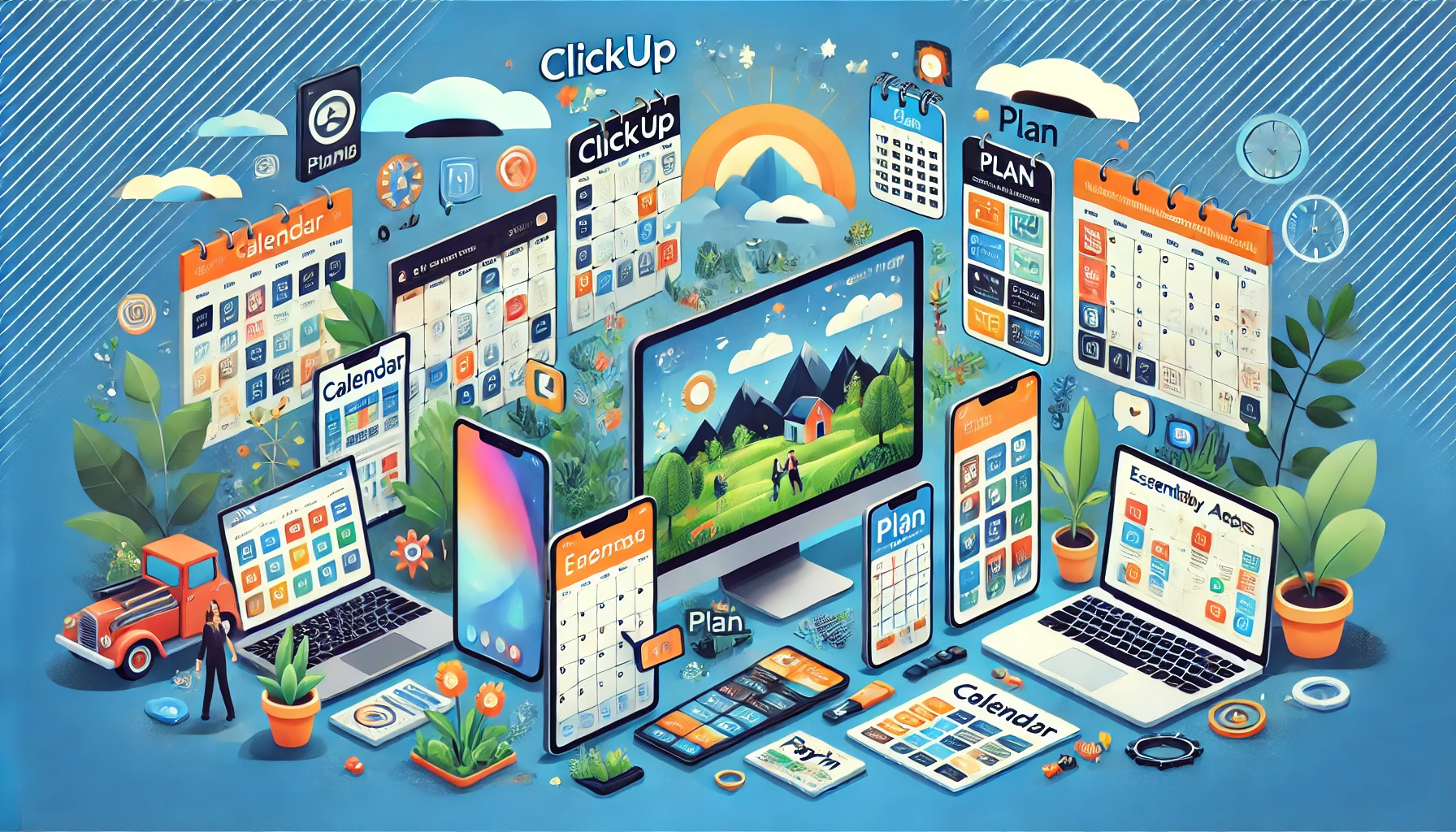Creating a smart monthly plan is more than writing down what you need to do. A monthly schedule helps outline all your tasks and commitments for the month, improving productivity and helping to reduce stress. It means finding the right mix of work, personal aims, and taking care of yourself. Organizing your personal life alongside work responsibilities is important to maintain a healthy balance.

It’s key to have the right tools for effective planning. Things like the A5 Filofax Binder and Zebra Mildliner Highlighters can make your plan fun and effective. They make it easy to find what you need and brighten your planner up. Time management is also vital, like with zero-based calendars. This approach ensures you don’t waste a minute, helping you tackle big tasks by breaking them down.
Every month’s start is a chance to look at your growth, set new goals, and handle money matters. The 50-30-20 rule is great for budgeting: 50% goes to needs, 30% to wants, and 20% to your savings or paying off debts. Tracking how you are spending time each month helps ensure your activities align with your priorities. By regularly looking over your goals and regularly reviewing your monthly schedule, you stay focused on what’s important, can make necessary adjustments, and reduce stress.
Start with a Detailed Calendar
Starting your month with a detailed calendar is key for success. Monthly spreads in planners help you visualize all the tasks, events, and priorities for the month, making it easier to stay organized and focused. It gives you a full view of what’s coming. Erin Condren’s monthly planners are made with thick paper, perfect for lasting through the month, and help you organize all the tasks and commitments for the month while setting clear priorities.
Use a Zero-Based Calendar
Using a zero-based calendar method helps you make the most of your time. It’s great for all tasks, big or small. Erin Condren’s planners allow you to pick the cover, size, and add-ons, leading to a personalized and effective planning experience.

Identify Key Events and Tasks in Advance
Planning ahead is crucial for success. Start by looking at the month ahead to identify key events and important dates. It helps you focus on what matters most.
Taking time to plan for the week ahead can help you stay organized, prepared, and reduce stress as you move through your monthly goals.
Erin Condren’s planners have sections for notes, productivity, and key events, plus lots of extras like checklists and stickers to help you stay organized and have fun planning.
Break Down Your Activities Simply
Efficient planning is all about simplifying tasks. This helps create an easy-to-follow activity list. By doing this, you can manage your time better and get things done. Time blocking is a great tool to use. It sets aside certain times for specific activities. This makes you more productive. Also, breaking big tasks into smaller ones helps. Turning large goals into manageable tasks allows you to make steady progress bit by bit, preventing overwhelm and making each step feel achievable. This approach stops you from feeling overwhelmed and keeps work flowing smoothly.
Leverage Time Blocks
Setting up time blocks is key to a good daily plan. Spend 10-15 minutes in the morning getting organized. This primes you for a focused day. Be careful not to take on too much. Setting too many goals can spread you thin. Instead, focus on specific goals to maintain clarity and boost productivity. It’s better to aim for one big task each day. This sets a good pace for the rest of your work.
Decompose Complex Tasks
Breaking big tasks into small parts is crucial for project management. It makes big jobs seem more doable. Tools like Gantt charts can be a huge help. They let you see your tasks clearly and help you visualize all the steps needed to complete a project. By doing this, you can stick to your plans, handle your workload well, and move forward every week with key tasks finished.
Use Color Coding to Organize
Color coding your calendar can make you more productive and less stressed. Chakra color coding system matches certain colors with different tasks. This makes it easier to see and do tasks in order, creating a smooth and calm planning system.

Implement Chakra Color-Coding
With chakra color coding, you link colors to specific tasks. For example, red might be for work and green for your personal events. Studies show this method increases how much you get done and keeps you motivated.
It’s smart to not use more than ten colors in your system. Let’s say you use the Mildliner Highlighter with five colors. It’s great for keeping things simple. You can pick colors for work, home, family, health, self-care, and finances. By color-coding, you see at a glance what’s most important.
Visual Balance and Stress Reduction
Color coding does more than just organize; it helps you keep your schedule in balance and reduces stress. Looking at a color-coded calendar, you can quickly see what you should focus on. This takes a load off your mind and keeps you on schedule.
It’s key to use colors consistently. This way, whether it’s managing social media, workouts, teaching at home, or family activities, the system works to keep your stress down. Over time, it can really help you manage your time better and increase how much you achieve.
Choose Strategy Over Opportunity
Picking a strategic approach over jumping at opportunities keeps your time, energy, and focus sharp. It means matching what you do with what truly matters to you. This way, you steer clear of getting too busy with things that don’t align with your values. Plus, it helps you keep a clear purpose in your plans. For companies, effective monthly planning is essential for supporting business growth and achieving business goals by ensuring that every action aligns with the overall strategy.
Align Tasks with Core Values
Planning smartly means linking your tasks to what you believe in. Doing this is super important now because some companies act fast without really thinking. They often make mistakes that cost a lot, like hiring the wrong people or picking bad tools. Strategic planning guides businesses to offer something special to customers. This helps them become standouts in their fields.

Avoiding Overcommitting
CEOs can get too caught up because they pick easy, quick plans over smart, long-lasting strategies. This can make them miss their goals. To avoid this, it’s key not to take on too much. It’s shown that almost half of companies fail at their goals because they don’t plan and act clearly. So, making sure you don’t do too much at once is crucial for moving steadily forward. Checking in on your plans often, like every month, makes sure you’re on track with what really matters.
Apply the “Eat That Frog” Technique
The “Eat That Frog” method helps work on big tasks first, created by Brian Tracy. His book, ”Eat that Frog!: 21 Great Ways to Stop Procrastinating and Get More Done in Less Time”, shows that starting with hard tasks boosts productivity. It helps fight off putting things off and sets a strong start for the day.
Not being clear often leads to wasting time and delaying work. Starting with the hardest task can make you feel like you’ve already won. Completing a major task before moving on gives a strong sense of satisfaction and progress. This can make the entire day go better. Tracy’s way uses the ABCDE method to sort tasks by their importance, making things easier and helping you get more done.
The 80/20 rule and the “Eat That Frog” method both say that most outcomes come from just a few big actions. Doing important tasks first matches this idea. It makes sure the most crucial things are done right away. This helps smart workers choose what really matters, avoiding what’s less important.
Using Zapier and Toodledo can boost the Eat That Frog method. They give you ways to put your tasks in order and keep track of them. This makes the method even better and easier to use.
Prioritizing tasks helps keep your mind clear and focused on big goals. For example, on September 9, making three blogs look better was a top job. Scheduling time to write blog posts as part of your monthly plan ensures you can complete this task efficiently. Doing it fast was key. This way works in real life, like seeing big jumps in what’s done on September 17 after tackling an important job early.
Even with its strong points, the Eat That Frog method needs careful planning. It can be hard in places where the work changes a lot. Still, it’s great for those who put off important tasks. It’s a strong way to plan a month full of good work.
For extra details, see how the Eat That Frog method boosts your work power.
Time Blocking versus To-Do Lists
Many experts say time blocking is better than to-do lists. Google says time blocking can boost work by 150%. It makes you set certain times for each job. This stops tasks from not getting done. Integrating weekly planning into your monthly routine can help you break down big goals into manageable weekly tasks, making your schedule more flexible and productive.

Normal to-do lists can feel like you never get to the end. Studies show almost half the to-do tasks are left. But, time blocking helps you organize better. It makes reaching your daily goals easier. There are tools like the Pomodoro method and wall planners to help with time blocking.
Folks often guess wrong about how long tasks will take. This messes up to-do lists. Reviewing your schedule on a weekly basis allows you to make necessary adjustments and stay on track. Time blocking fixes this with extra time, called buffer zones. The book “The ONE Thing” suggests long, focused hours for work. Elon Musk uses just five-minute blocks to stay productive.
Time blocking improves focus by stopping multitasking. Our brains work better on one thing at a time. It helps meet your long-term goals too. Telling others your time blocks and controlling your schedule are key to making this work.
But, time blocking might not always match how you feel during the day. It can also stress you with tight deadlines. Yet, its clear plan often gets more done than a messy to-do list.
Create an “Optional” Calendar
Make an “optional” calendar to boost your productivity. It adds tasks that aren’t needed right away. This way, you use your free time wisely, filling it with important tasks.
Includes Non-Mandatory Tasks
Adds non-urgent tasks to your schedule. This might be reading an article or sorting digital files. Using this method, you use every moment well, even in between important appointments.
Flexibility with Unplanned Changes
An optional calendar gives you room for surprise changes. If a meeting is canceled, you can smoothly adjust your schedule. Apps like Calendars by Readdle help organize your days, connecting to different services and devices. With many users worldwide, the trend of flexible planning is growing.
Right Tools for Monthly Planning
It’s crucial to pick the right tools for monthly planning to be successful. Creating a master list of recurring tasks or meal ideas can streamline your monthly planning process, making it easier to select what you need without starting from scratch each time. You can boost your organization with apps for productivity, managing your calendar, tracking tasks, and taking notes.
Essential Calendar Apps
Several apps make planning each month easier. ClickUp is great for personal or team plans. It’s free for personal use and starts at $5 per user each month for more features. Miro’s Weekly Planner helps you see your plan visually. It’s free for up to 3 boards and then $8 a month for teams. Plan, starting at $6.67 per user each month for 5+ users, is good for team calendars. For simple scheduling, DayViewer is straightforward and costs $8 a month.

Note-Taking and Task Management Tools
For monthly planning, note-taking and tracking tasks are key. Evernote is useful for free, with more features in its paid version. This makes it great for jotting down ideas and to-dos. Canva helps with pretty and customized task lists. It’s free, but has more options in its pro version. Many people still love using paper planners. One writer found a great one at Target for just $12. This shows that paper tools still matter in the digital world.
Incorporate Unstructured Time
Including unstructured time in your month stops burnout and boosts creativity. Adding unstructured time to your monthly plan can help you avoid burnout by giving you space to recharge and maintain your well-being. Benefits are real talks and closer family ties. It offers a break for the brain, easing stress and offering a fresh start.
Having time that’s not all planned lets us learn and grow freely. Just like SAS with a 35-hour workweek and strong results, we see its worth. Iceland’s success showed in less work time too. Mixing play with plans is key, especially for kids.
Playing outside and doing fun family things like walks, picnics, or visiting museums moves kids and helps them grow. It’s important to limit TV and video games for their best ideas and health. Encouraging hobbies or team sports adds loads to their free time.
Also, flexibility in our plans can give the mind a needed break and help with new ideas. Planning ahead also helps you avoid last minute stress and pressure, making it easier to adapt when things change. Big bosses want more open time to really lead well.
In the end, open time means we get better at making choices, managing time, and trusting ourselves. It helps in everything we do, at work, and in life.

Conclusion
In our journey through the 9 tips, we’ve seen how smart planning boosts our work and happiness. Using a detailed calendar, setting time blocks, and starting with hard tasks first all help. They work even better with the right tools for organizing. This mix leads to better use of time and a more balanced life.
The guide also talks a lot about being flexible. It’s good to have some free time in your plan. This lets you handle changes easily and make necessary adjustments as circumstances change. It’s also key to focus on what really matters and not do too much. These choices help us reach our big goals, making our life more fulfilling in the end.
To sum it up, real success comes from managing our time fully. These tips and tricks go beyond just saving money over a few years. They help us keep a good mix of work and downtime. So, it’s not just adding tasks to our schedule. Don’t forget to include rest and self-care in your monthly plan. It’s about building habits that lead to success and feeling good overall.
FAQ
What is zero-based calendaring?
Zero-based calendaring plans every second of your day. There are no empty spaces. It helps you plan for private and work tasks thoroughly.
How can I break down complex tasks effectively?
Break big tasks into smaller, doable parts. This method makes large projects easier to handle. You create clear steps to finish each task.
What is the “Eat That Frog” technique?
The “Eat That Frog” method, by Brian Tracy, means doing hard tasks first. It gets you going strong. You feel great by hitting big goals early.
How does time blocking improve productivity?
By assigning set times to tasks, time blocking helps you focus. It cuts down on things that distract you. Plus, it makes reaching daily goals more likely.
What is the role of an “optional” calendar in monthly planning?
The “optional” calendar lists tasks that are not a must-do every day. It adds wiggle room for sudden changes. It makes sure you don’t waste any time.
Why is color coding useful in calendars?
Color coding sorts tasks by using different colors. For example, use red for work and green for fun. This makes tasks clear at a quick glance.
What are time management techniques for monthly planning?
For monthly planning, try methods like zero-based calendaring and time blocking. Also, break tasks into parts and eat the biggest frogs first. Remember to leave space for creativity and not overwork.
How can I align my tasks with my core values?
Match your tasks with what matters to you most. Focus on the tasks that connect to your goals. This keeps your work and time meaningful.
What are some recommended tools for monthly planning?
Use tools like Google Calendar, Trello, Asana, Toggl, and Evernote for planning. They help keep your tasks organized. You can manage time well with these apps.
Why should I incorporate unstructured time into my schedule?
Unstructured time is good for your brain to take a break. It boosts creativity and helps you adjust to changes. It makes your schedule more flexible and enjoyable.

More Posts
11 Helpful Tips to Prepare for Timed Assessments
Preparing for timed assessments is key to doing well. This includes big tests like the SAT, ACT, or school exams. These tips will help you do better on your tests and feel less...
7 Benefits of Time Management Worksheet
Learning time management helps you make the most of your week. With tools like time management worksheets, you can get more organized and efficient. This means you can do more with your time....
How long does it take to break a habit?
Breaking a habit is necessary sometimes when it starts causing problems in one’s life. Therefore, when we categorize habits into good and bad habits, we can say, “Breaking bad habits is necessary.” The...
11 Top Reasons To Plan Digitally
Why Use A Digital Planner? 11 Reasons To Plan Digitally If you have ever used daily diaries to make plans for the coming time. In that case, you can be familiar with digital...